Chichester skeleton: Racton Man 'was warrior chief killed in battle'
- Published
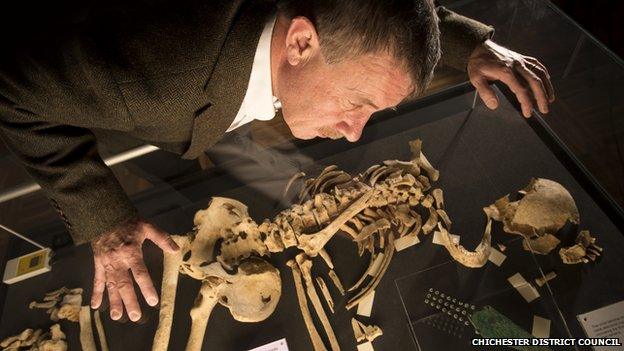
Racton Man was discovered during a dig in 1989 near Westbourne, West Sussex
A 4,000-year-old skeleton found on farmland in West Sussex was probably a warrior chief who was killed in battle, scientists have revealed.
Tests on the Bronze Age skeleton showed he was over 45 when he died, probably grew up in southern Britain around what is now West Sussex, and was 6ft tall.
The skeleton was found in 1989 during a dig near Westbourne led by archaeologist James Kenny.
It is now on display at The Novium Museum in Chichester.
'Phenomenally rare'
The skeleton, known as Racton Man because of where he was found, was discovered with one of the earliest known bronze daggers in the UK, leading scientists to believe he was a tribal chief.
Experts said that wounds to his upper arm made around the time of his death which had never healed suggested he had died during a fight.
Mr Kenny, Chichester District Council's archaeologist, described the results as "staggering".
"The fact that this man had a bronze dagger would have been phenomenally rare then, let alone now," he said.
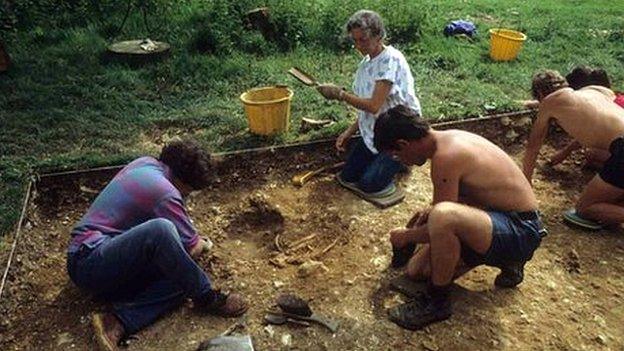
A dig was carried out after a metal detector user found bone and metal fragments

The skeleton was found in a crouched position with a dagger in its hands
Specialists from England, Wales and Scotland analysed the skeleton's teeth, bones and weapon to learn about the man.
Some of the details learnt about Racton Man:
He was over the age of 45 when he died
He was buried with one the earliest bronze daggers ever found in the country
He suffered from a number of conditions including spinal degeneration, a chronic sinus infection and tooth decay
He grew up in southern Britain, possibly around modern-day West Sussex
He died between 2300BC and 2150BC
Dr Stuart Needham, a Bronze Age specialist who took part in the study, said Racton Man would have been "someone of great seniority".
"We don't understand the social structure of this time, but he would have been a very prominent member of society," Dr Needham said.
Isotope analysis on the skeleton's teeth revealed where he had grown up while radiocarbon dating showed he lived during the Bronze Age.

The dagger handle was made of horn or bone but has now disappeared
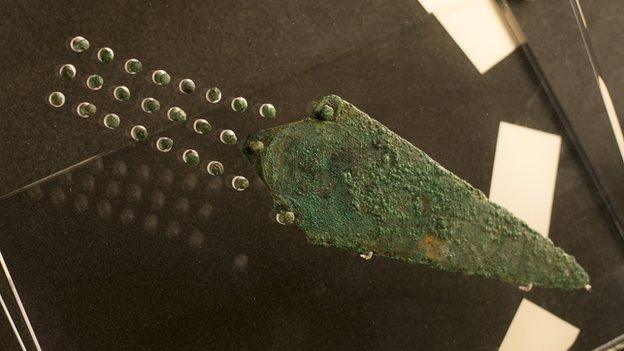
The dagger is one of only seven ornate rivet-studded daggers ever discovered in the UK
Racton Man was also found to be displaying signs of spinal degeneration, thought to be due to his age, and had suffered from a chronic sinus infection as well as an abscess and tooth decay.
While the skeleton was found in the 1980s, tests have only now been carried out after funding was made available by Chichester District Council.
Councillor Myles Cullen, a cabinet member for the council, said: "To think that we can discover such detail about a man who died more than 4,000 years ago, while learning more about the country's history, is just incredible."
- Published11 April 2014
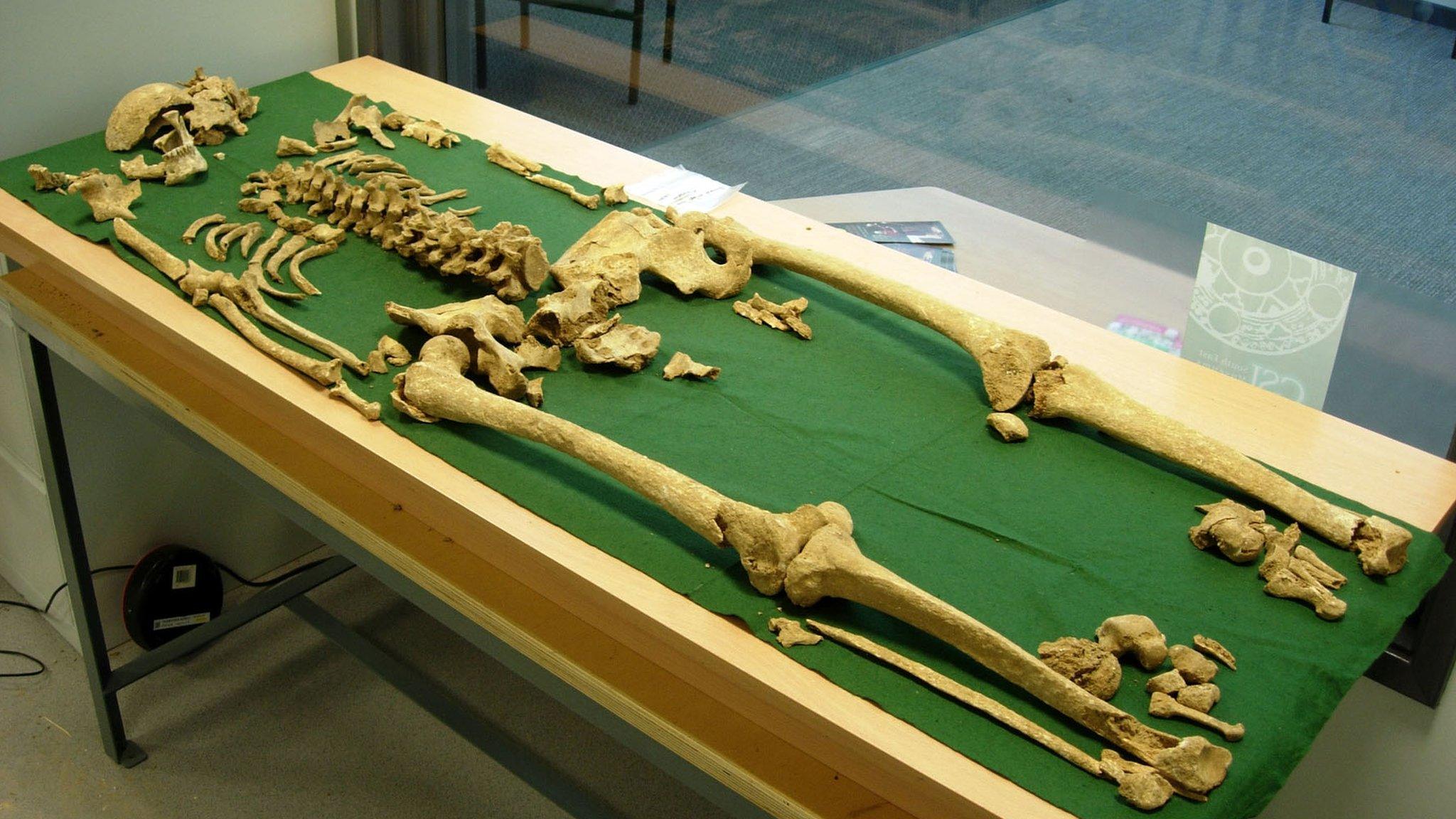
- Published28 September 2010
- Published10 April 2014
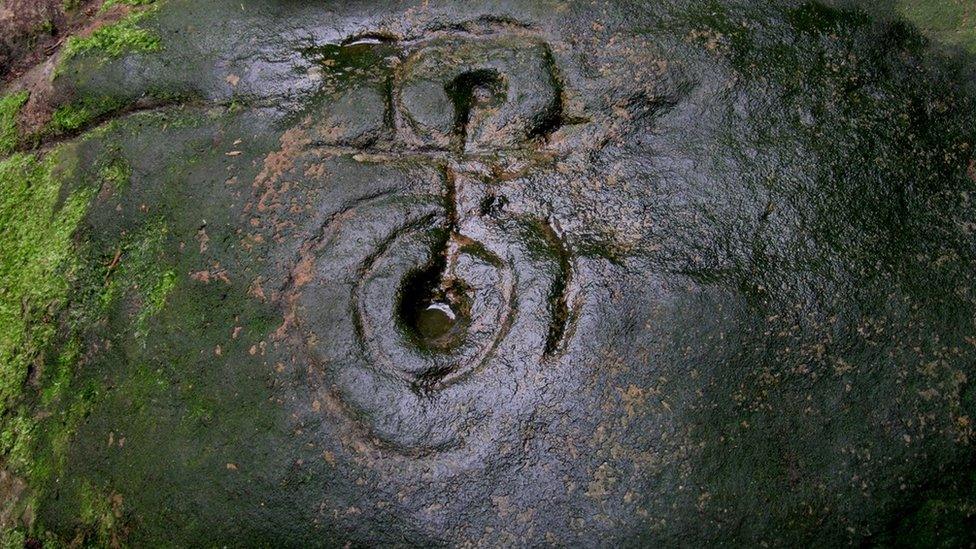
- Published18 March 2014
